
Gingivitis is a gum disease involving the bones that support the teeth. Symptoms include bleeding and a swelling of the gums, bad breath, and pain when biting. As the condition worsens tooth loss will occur. Gum disease such as gingivitis is on the rise. It is estimated that 70 percent of world’s population has some form of gum disease. Moreover, about 900 million people suffer from serious gingivitis, many of whom have given up trying to treat the disease. It is not impossible to treat gingivitis. A proper diagnosis and treatment can improve the condition considerably.
In recent years, effective medicines for gingivitis including Electrolyzed Hypochlorite Water and antibiotics have become available. electrolyzed hypochlorite water is a sterilizing mouthwash, which can kill cavity-causing bacteria by applying it only for ten seconds everyday.
Click here to learn more about Electrolyzed Hypochlorite Water
Click here to learn more about gingivitis medicine
A probiotic treatment option is also available for patients with mild symptoms or those who would like to avoid any medication. This option prevents periodontal diseases by increasing beneficial lactic acid bacteria LS1, which is naturally found in the body.
electrolyzed hypochlorite water is easy to use and highly effective. Because of its high level of bacteriolysis, it kills bacteria when a patient rinses the mouth for ten seconds everyday.
* Bacteriolysis means to kill bacteria by breaking up biofilms, where cavity-causing bacteria reside.
Despite its high sterilization efficacy, Electrolyzed Hypochlorite Water has minimum impact on the body. Unlike traditional gingivitis treatment, surgical gum treatment procedure is not required. Moreover, the in-clinic Electrolyzed Hypochlorite Water treatment is completed for a short time. Electrolyzed Hypochlorite Water treatment is now being watched as the new gingivitis and periodontal treatment.

This photograph shows the upper teeth of a patient who lost many front teeth from gingivitis. Although some of the gingivitis symptoms were treated, problems still remain due in part to the patient wearing unfitted dentures for a long time.
A problem in this case is due to the fact that there was no integrated diagnose or treatment plan. Most of the gingivitis cases have an initial symptom of shifting teeth and bleeding gums. If you treat only the symptom, gingivitis will worsen, and you will loose your teeth.
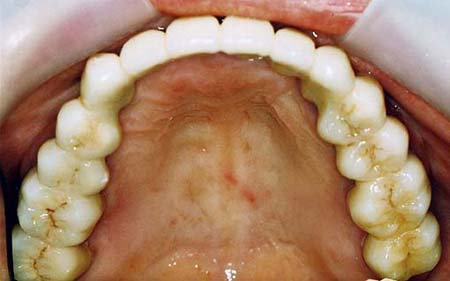
The second photograph shows a mouth after the treatment. The root of a tooth buried in the bottom of the gum was pulled farther out of the gum, and all teeth and gums were treated without extracting one tooth. Since implant-supported bridge was used for the missing teeth, she no longer has to wear dentures. The result is a beautiful smile and healthy gums.
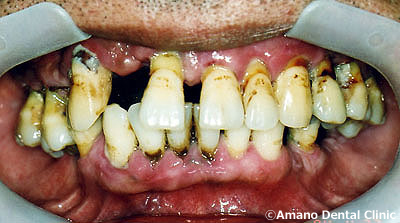
This patient had an advanced stage of gingivitis. Since severe symptoms of shifting teeth and swelling gums constantly appeared, he needed an integrated treatment. We first gave him gingivitis medicine, Zithromax and Fungizone Syrup.
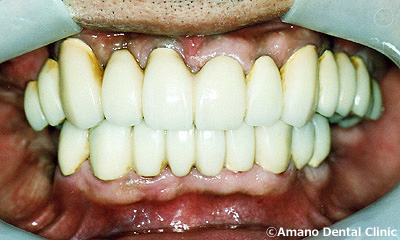
The second photograph shows teeth after the treatment. All teeth and gums were treated, and teeth were connected with implant-supported bridges. The gingivitis medicine considerably improved gum conditions.
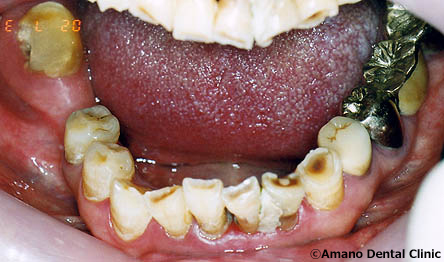
This photograph shows the back teeth of a patient treated for a missing tooth. We found many shifting teeth due to an advanced stage of gingivitis.
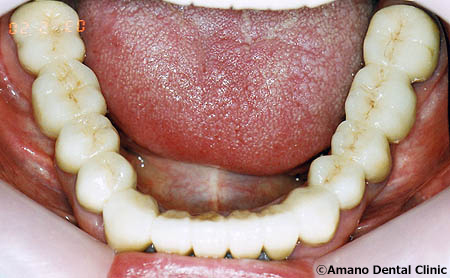
The second photograph shows the teeth after the treatment. All teeth were connected and fixed with implant-supported bridges. Because gingivitis was also treated, healthy gums are back.
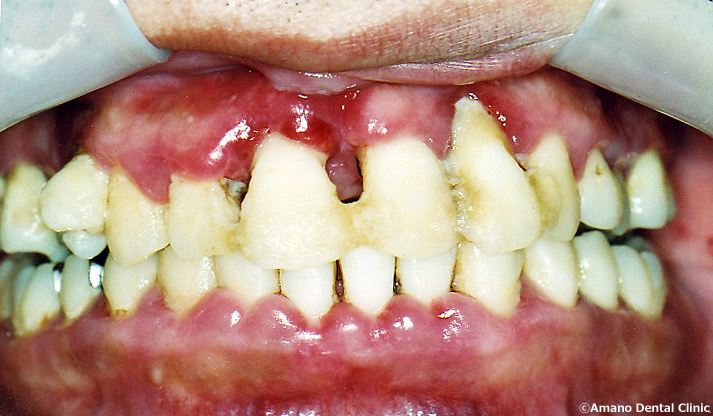
This patient sought a treatment for swollen gums and shifting teeth. We found that gingivitis had advanced and most of the teeth were loose.
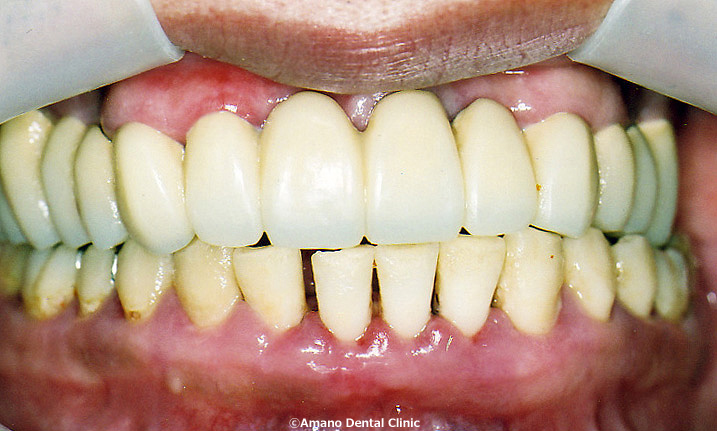
The second photograph shows the upper teeth after the treatment. Because the bone structure was damaged, implant-supported bridges were used to connect all teeth. Only two among the fourteen upper teeth were pulled out.
Due to the gingivitis treatment, the gums became healthier and stopped bleeding. The treatment will be extended to the lower teeth.